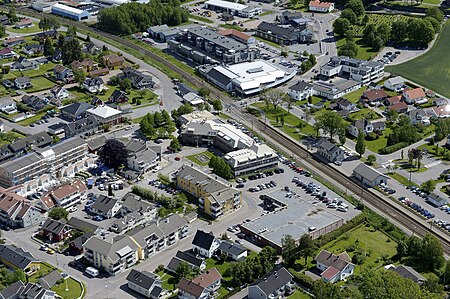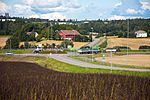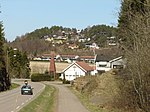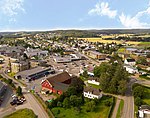Stokke (village)

Stokke is a village in Sandefjord Municipality in Vestfold county, Norway. The village is located about 10 kilometres (6.2 mi) to the northeast of the city of Sandefjord and about 10 kilometres (6.2 mi) to the southwest of the city of Tønsberg. The village of Melsomvik and the Tønsbergfjorden lie about 2 kilometres (1.2 mi) to the east of Stokke.The 2.31-square-kilometre (570-acre) village has a population (2022) of 4,221 and a population density of 1,827 inhabitants per square kilometre (4,730/sq mi).Stokke was the administrative centre of the old Stokke Municipality which existed from 1838 until its dissolution on 1 January 2017.The European route E18 highway passes 2 kilometres (1.2 mi) to the northwest of the village. The Vestfoldbanen railway line passes through the village, stopping at the Stokke Station. Stokke Church is located in the village. The village is the site of the Bokemoa elementary school and Stokke secondary school. The Gjennestad upper secondary school lies just a short distance north of the village.
Excerpt from the Wikipedia article Stokke (village) (License: CC BY-SA 3.0, Authors, Images).Stokke (village)
Kastanjeveien, Sandefjord
Geographical coordinates (GPS) Address Nearby Places Show on map
Geographical coordinates (GPS)
| Latitude | Longitude |
|---|---|
| N 59.22359 ° | E 10.30032 ° |
Address
Kastanjeveien 5
3160 Sandefjord
Norway
Open on Google Maps









